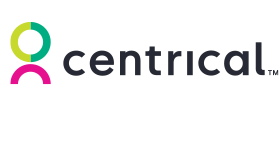Call centres have been plagued by a persistent challenge, particularly over the last five years: high turnover rates.
According to McKinsey, the turnover rate is close to 50-60% annually. The revolving door of agents entering and exiting disrupts the flow of customer service, impacting morale, the ability to fulfill SLAs and meet critical KPIs, and revenue.
But what causes high employee turnover rates? And what can you do to help increase job satisfaction and employee retention?
The good news is that in most cases, call centre turnover is preventable. In this article, we’ll discuss some of the basics of call centre turnover, including how to calculate turnover rates, why agents leave, and how to reduce turnover rates.
What’s Call Centre Turnover?
Call centre turnover refers to the rate at which employees leave a call centre within a given time frame.
This metric speaks to the health and stability of the workforce. A high turnover rate can signal underlying issues that, if unaddressed, can lead to a number of challenges—from decreased customer satisfaction to increased operational costs.
Calculating Call Centre Turnover Rate
Good news is you can start to shift this paradigm right away by getting a baseline understanding of where you stand.
To calculate the call centre turnover rate, all you have to do is divide the number of employees who leave during a specific period by the average number of employees during the same period, then multiply that number by one hundred.
This formula provides a clear picture of the rate at which agents are exiting the organization:
Turnover Rate = (Number of Employees Leaving/Average Number of Employees) ×100
5 Factors Affecting Call Centre Turnover
Poor Pre-boarding Practices
Call centre turnover can happen before the agent ever clocks in – a phenomenon called first-day ghosting. The culprit?
A disconnected pre-boarding experience. When there is low communication between offer acceptance and the first day, new hires might feel disconnected and accept another offer, or decide to stay at their old job.
Burnout
Burnout is a key reason for call centre turnover. The demanding nature of call centre work leads to disengagement and frustration, and often a poor work-life balance.
This adversely affects employee well-being and performance – leading to attrition, which further impacts the customer experience. Burnout isn’t exclusive to agents – it affects managers as well.
Poor Training and Coaching
Call centre turnover rates are also affected by the quality of training and coaching that agents receive – particularly new agents.
If agents aren’t retaining the training they need to fulfill the expectations around their role, they will not feel confident or comfortable at work, and their performance will show it.
And if managers don’t have the bandwidth or tools to coach agents as needed, that lack of guidance will also lead to turnover.
Limited Career Paths
Career paths are another factor in call centre turnover rates. Agents (especially Millennials and Gen Z) are looking for more than a paycheck – they want to build a career.
If a call centre lacks clear paths for advancement, employees may seek opportunities elsewhere.
Disconnection and Disengagement
Agents may feel disconnected from their managers, their teams, or perhaps the organization as a whole, affecting their engagement levels and overall job satisfaction.
They might also feel a sense of isolation (especially in a remote work model). Agents might also lack a sense of accomplishment or meaning in their daily work.
Industry Benchmarks
Understanding industry benchmarks is essential for assessing the health of a call centre’s workforce.
According to recent stats, the call centre attrition rate is now higher than ever, with some reports suggesting rates between 50 and 60%.
The great resignation and post-pandemic work model changes have only exacerbated this issue, making it a top concern for call centre leaders.
Consequences of High Call Centre Turnover
The consequences of high turnover rates extend beyond the obvious challenges of a continuous recruitment and training cycle.
It directly impacts customer satisfaction, since new agents may not have the experience and knowledge needed to handle customer calls effectively.
Additionally, the constant stream of turnover impacts veteran agents. In addition to resources (such as coaching time) being inordinately dedicated to new hires, veteran agents will also need to pick up the slack for, and assist, new agents as they work to get to proficiency.
This, in addition to the instability of constant churn, impacts overall agent morale and well-being.
Finally, the financial burden of recruitment, onboarding, and training costs can erode the bottom line (with an estimated cost, per McKinsey, of $10K-$20K per agent).
8 Strategies for Reducing Call Centre Turnover
Boost Pre-boarding Processes:
The more connected and engaged your new hires are between offer acceptance and their first day, the more likely they are to show up.
We recommend steps that include assigning a point-of-contact to reach out to the new hire regularly with updates and welcome communications and gamifying the pre-boarding experience.
Invest in Employee Training and Development:
Fight the forgetting curve and reinforce learning and training with solutions that include AI-powered microlearning.
Triggered by performance and knowledge gaps, microlearning delivers targeted and relevant learning modules that agents can complete between calls.
Also provide clear career paths and training programs that empower agents to enhance their skills and climb the career ladder within the organization.
Help Managers Guide Employees:
Managers spend a large amount of time on admin tasks; this, added to other items on their daily to-do list, will often cut into coaching time.
Leveraging AI for coaching helps managers cut down on the admin work and focus on their employees, leading to better, more productive conversations and a stronger human connection.
Take a Human-Centric Approach:
Create a supportive work environment that values work-life balance, addresses burnout, and promotes the overall well-being of call centre employees.
This includes empathetic coaching, setting clear and reasonable goals and expectations, discussing workload, monitoring engagement, and establishing a continuous feedback loop so employees feel heard.
Implement Real-Time Feedback:
Regular and constructive feedback is crucial for agent performance. Consider implementing a real-time performance management to provide instant feedback, fostering a culture of continuous improvement.
Reward and Recognize:
Course correction is important, but so is recognizing employees for improvements, achieving milestones, and for an overall job well done.
Sending a kudos to an agent will serve as a huge motivator, keeping them engaged, performing well, and retained.
Connect Through Collaboration:
Encourage connection and collaboration across teams and agent tenures through social knowledge sharing.
Not only does this build a sense of camaraderie, sharing tips and best practices greatly helps agents across the board improve their skills, from new hires to seasoned agents who may be cross-skilling or upskilling.
Get Gamified:
The application of game mechanics to a non-game context, gamification taps into intrinsic and extrinsic motivators and engages employees, adding some fun to their workday.
This extra motivation and engagement boost results in higher performance, better retention rates, and an improved customer experience.
Diving Into Future Trends
The rise of remote work, increased reliance on technology, and a growing emphasis on employee experience are shaping the future of call centre operations. To reduce call centre turnover rates, organizations are turning to a holistic approach to performance management and engagement. This approach includes wellness checks, leveraging AI, improved processes around training and development, providing coaching tools for managers, and advanced gamification.
A Performance Management Gamification Platform
Gamifying performance management transforms the workplace into an engaging arena where agents are constantly motivated to excel.
Real-time feedback, personalized learning paths, and interactive challenges create an environment that nurtures talent and promotes continuous improvement.
A data-driven approach goes beyond surface-level metrics, providing deep insights into agent performance, strengths, and areas for growth.
Fostering a culture of recognition and achievement contributes to higher job satisfaction, increased engagement, higher productivity and performance, and ultimately, reduced turnover.
Summary and Key Takeaways
In this article, we have covered some of the basics of call centre turnover, its consequences, strategies for reducing call centre turnover, and a look at some related trends. Below are a few key takeaways:
- Call centre turnover is a pervasive (and largely preventable) issue across the industry, with some estimates reflecting an annual attrition rate of 50-60%.
- Burnout, limited career paths, poor training, a sense of disconnection, and disengagement are key factors contributing to turnover.
- Industry benchmarks indicate a rising call centre attrition rate, requiring proactive measures by organizations.
- Consequences of high turnover include diminished customer satisfaction, customer churn, and financial strain.
- Strategies such as employee development, prioritizing well-being, and implementing real-time feedback can effectively reduce turnover.
- The Centrical platform offers a holistic solution to address turnover by promoting engagement, recognition, and continuous improvement.
Understanding and addressing call centre turnover requires a multifaceted approach that combines strategic initiatives, industry insights, and innovative tools.
This blog post has been re-published by kind permission of Centrical – View the Original Article
For more information about Centrical - visit the Centrical Website
Call Centre Helper is not responsible for the content of these guest blog posts. The opinions expressed in this article are those of the author, and do not necessarily reflect those of Call Centre Helper.
Author: Centrical
Published On: 12th Feb 2024 - Last modified: 6th Dec 2024
Read more about - Guest Blogs, Centrical






 Centrical provides a real-time performance management, microlearning, gamification, coaching, and voice of the employee platform for frontline teams. The solution inspires and personally guides employee success and growth by making every moment actionable.
Centrical provides a real-time performance management, microlearning, gamification, coaching, and voice of the employee platform for frontline teams. The solution inspires and personally guides employee success and growth by making every moment actionable. 






























